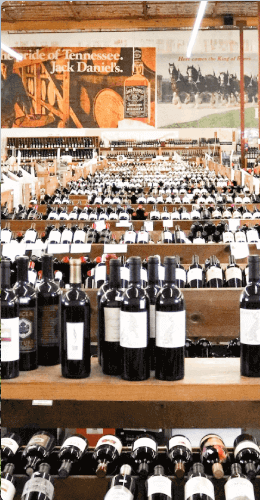Rioja Offers Superb Tempranillo and more

Go to an average bar in Spain, order a glass of red wine, and you usually have two choices: “Give me a Ribera” or “Give me a Rioja.” Both Ribera del Duero and Rioja reds are likely to be wines made from the Tempranillo grape and feature some ageing in oak, which has its allure. It produces wines that benefit from long ageing, balancing alcohol (typically 13-14.5%) and acidity, providing a smooth, fruity mouthfeel that turns velvety over time. Cherry, plum, and dried fig flavors can be complimented by cedar, leather, tobacco, and clove, with some vanilla from the oak. Rioja is Spain’s most famous wine region, a major exporter of wine, and it’s planted over 70% to Tempranillo grapes.
Serious wine production in Rioja dates back to the 18th century, linked to winemakers fleeing the phylloxera crisis in France, over the mountains. In the 20th century, Rioja developed a reputation for producing old-style, long aged, kind of stuffy wines whose pinnacle of expression were the Reserva and Gran Reserva categories, with long oak ageing and time before release. These remain great wines, for their style and to hold for years or decades.
The exciting factor in Rioja now, however, is its overall diversity and winemakers who know (or are learning) how to express it. Some call this Modern Rioja. This movement among winemakers includes not just using other grapes, like Garnacha or Graciano, but also wines that express more precise terroir as well as vibrant, complex whites, roses, and even sparkling wines. Too, there are now fresher wines outside the Reserva and Gran Reserva (now called Gran Anada) categories, and these wines can feature great quality to price ratios. Look for reds from the Crianza category or below (simply “Tinto,” “Roble,” or “Joven” printed on the label). Crianza for red wines means a minimum of three years before release, with at least on year in Bordeaux-style oak barrels. The days of looking at wines below the level of Crianza with skepticism is now over, as many winemakers are escaping the regulatory strictures that emphasized oak ageing as the end all and be all of Rioja winemaking.
Rioja actually consists of three broad geographic regions: Alavesa, Oriental, and Alta. These are worth exploring through their wines. Rioja Alta features vineyards on Sierra Cantabria mountain slopes with a variety of soils (clay-limestone, ferrous-clay and alluvial) up to 2600 feet above sea level. A Basque region, Rioja Alavesa is north of the Ebro River, also with high-altitude vineyards and numerous micro-climates. South and east of Logroño, Rioja Oriental is lower and hotter, with more of a Mediterranean climate, perfect for grapes like Garnacha.
But beyond these big regions, the regulatory body for Rioja wines now recognizes single-vineyard, village (or municipio), and zonal categories. So, specific, certified origin of production is increasingly something to look for in contemporary Rioja wines.
In addition, there’s more than just Tempranillo! Garnacha wines, either pure or blended, are diversifying the Rioja wine scene, with more freshness and youth, expressing strawberry, cherry, citrus rind, and cinnamon flavors. There are clarets made from Garnacha blended with the white grape Viura. And Rioja white wines have made huge strides in the past 15 years.
One great example is the 2018 Bodegas Muga Blanco, a medium-bodied white features flavors and aromas of pears, green apples, lemons and white flowers. To sample some older-style Rioja reds, consider some of the rare wine treasures Bottle Barn has locked away: the 1950 Bodegas Berberana Gran Reserva Rioja, 1960 Marques de Riscal Reserva Rioja, or the 1984 Marques de Murrieta Ygay Rioja Reserva. For an example of more modern-style Tempranillo, buy online the 2017 Gomez Cruzado Rioja Crianza, which features 20% Garnacha in the blend. Wine Advocate says it’s “polished and velvety, very drinkable, with a sleek and seamless palate, fine tannins and very good balance.” Finally, Muga’s red wines are superb, expertly blended. Try the 2016 Bodegas Muga Rioja Seleccion Especial, with 70% Tempranillo, 20% Garnacha, 7% Mazuelo, 3% Graciano and a score of 95 points from critic James Suckling!
Written By: Charlie Leary


















Leave a comment